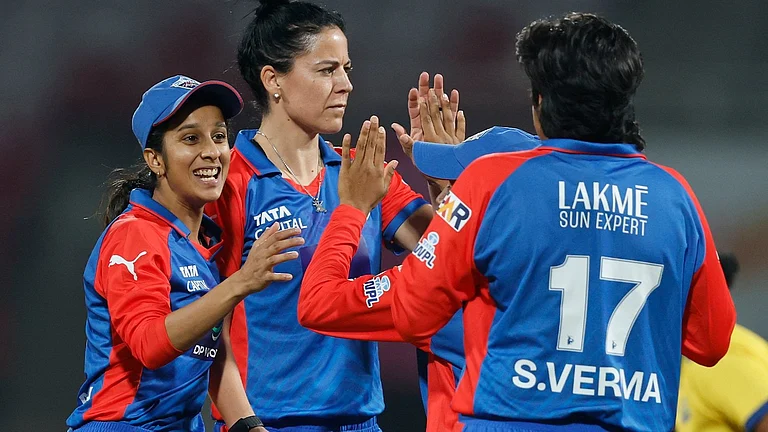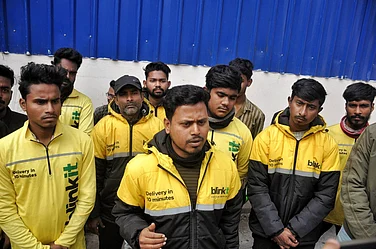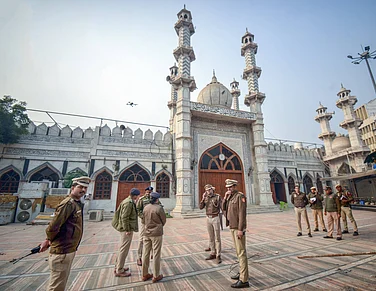As India turns 71 next week, Outlook zeroed in on 21 individuals who have made a lasting impression on this country – for both good and bad – so far in the 21 st century. And we got 21 equally important personalities to write on the 21 individuals we chose.
In this column, social activist Medha Patkar writes on Indian ecologist Madhav Gadgil.
Satyagraha means satya ka agraha, the quest for truth, and it has many forms. Even Gandhiji would have changed his form of satyagraha if he were alive today. Satyagraha can be a fight in the streets or the courts, not with swords and guns, but with zubaan, kanoon, junoon—words, law and passion. One who is determined, willing to sacrifice and stands without compromise for what he sees as truth is a satyagrahi. Madhav Gadgil is one of them. Researchers and environmentalists like him may work within the system, but they still extend a kind of agraha—a desire for an alternative future.
Incumbent upon satyagrahis is the determination to face consequences. Gadgil has thought deeply about the environment, and not in an anti-people way. So his work cannot be critiqued via the false dichotomy between environmentalism and people’s struggles for jal, jangal, zameen—water, forest, land. Who has rights to natural resources, who plans their allocation and what values go into that accounting are critical questions for environmentalists too. Each poses a technical challenge as well: the technology we use determines whether we go for water management or big dams, how much green cover we have and where. Distributive justice thus underpins environmental planning.
Our development must be planned from its very inception to make sure it is democratic and humane. Gadgil’s work echoes this activist mission. This is best illustrated in how he helped formulate the Biodiversity Act. He raised the standard of biodiversity regulation, as did others such as Ashish Kothari. Gadgil’s vision of biodiversity keeps human beings at the centre of the environment. The poser in his model is: how we can save the environment while we also use it?
The environment is not just meant for tourism. Nor do wildlife and forests complete the picture. The environment must be used first to meet the basic necessities of local communities, whether adivasis, Dalits, shepherds, nomads or forest-dwellers. Every river and estuary, every farmland, is touched by this struggle over resources today. The most skilled researchers map biodiversity resources, but the foundation is still ordinary people who live off them. The market and capital are making inroads into these zones and biodiversity cannot escape this unless there is resolve in the hearts of satyagrahis.
Gadgil’s vision encompasses these concerns in the Biodiversity Act. Its framework is a model for partnership with people to protect and sustain the environment. We activists get so caught up in struggles that we are sometimes unable to use even laws that help our cause. Still, the law is one tool in people’s hands and to this Gadgil made a giant contribution. When we questioned the Lavassa project, for it would have diverted water from Pune, Gadgil supported us. He also supported us when the Narmada struggle started. He sent many younger peers to study the flora and fauna of the Narmada valley. This was when the government had approved construction of the dam without getting environmental clearances.
The erstwhile UPA government gave Gadgil some space in the National Advisory Council, but what he suggested was not accepted, so his work is unfinished. His biggest contribution to the Western Ghats report was the partnerships it forged with gram sabhas from Maharashtra’s Sindhudurg right up to Kerala.
Gadgil linked up with activists without sidestepping the government—that has been valuable, but he should go further now. Gadgil has a delicate disposition, but his thinking is agile. Justice Rajinder Sachar was delicate too, but stood by us at Jantar Mantar. We expect the same from Gadgil. He should take the lead among intellectuals and join hands with the working classes.
Development activists are labelled anti-development and anti-science, but Gadgil is a scientist who accounted for development. I met him first at the Indian Institute of Science in the 1990s, but today he does not need an institute—he is an institution in himself. He should mix his power with that of the people.
Whatever people have gained, in Narmada or elsewhere, was always through struggle. But people cannot fight all alone. Gadgil’s research has been a kind of intervention. Economists, lawyers and researchers have to join. This is our agraha—request. We are not always successful, but every time we coordinated our efforts, everybody came closer to their goals.
To read more columns on game-changers, click here
Medha Patkar is a social activist associated with the Narmada Bachao Andolan and the National Alliance of People’s Movements

























